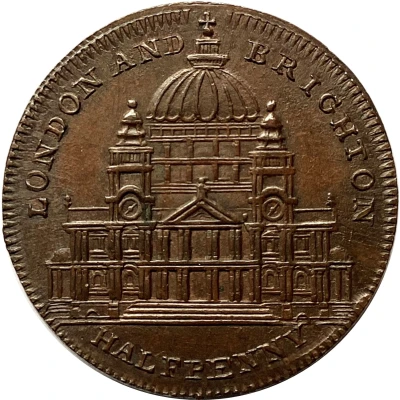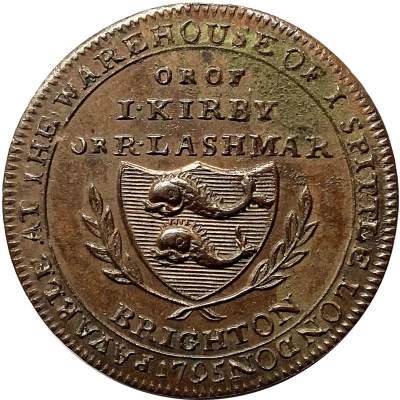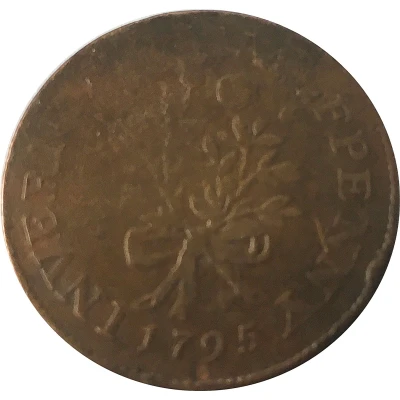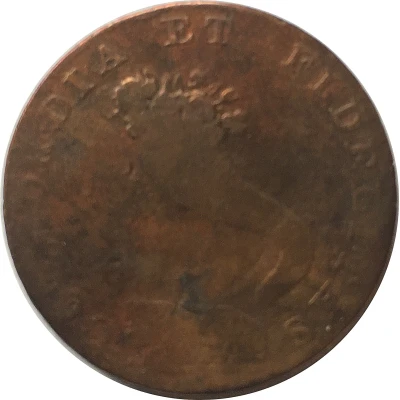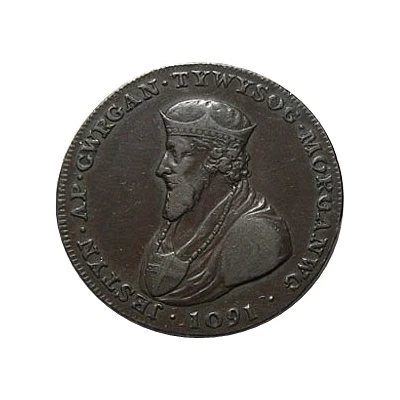
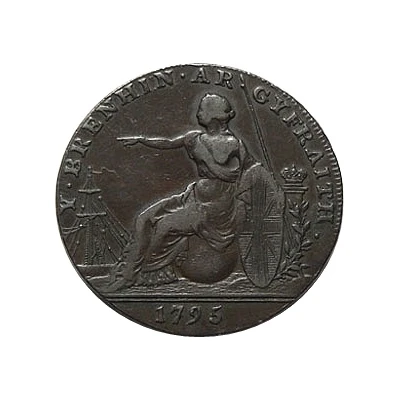

© ABC Coins & Tokens
½ Penny Glamorganshire – Glamorgan / Jestyn
1795 year| Copper | 11 g | 28.6 mm |
| Issuer | United Kingdom (United Kingdom, British Overseas Territories and Crown Dependencies) |
|---|---|
| Type | Token |
| Year | 1795 |
| Value | ½ Penny (1⁄480) |
| Currency | Conder tokens (1787-1797) |
| Composition | Copper |
| Weight | 11 g |
| Diameter | 28.6 mm |
| Shape | Round |
| Technique | Milled |
| Orientation | Variable alignment ↺ |
| Demonetized | Yes |
| Updated | 2024-10-09 |
| Numista | N#111881 |
|---|---|
| Rarity index | 86% |
Reverse
A draped Britannia seated on a globe, looking to the left while pointing with right hand to a ship, and left arm supporting a shield and a spear. Behind her is a crown on a cippus pedestal with a laurel branch leaning against it; date below in double exergue. Lettering around, toothed border
Script: Latin
Lettering:
Y · BRENHIN · AR · GYFRAITH.
1795
Translation: The King and the Law
Edge
Raised lettering (created by curved groove below) followed by four leaves
Lettering: GLAMORGAN HALFPENNY
Comment
Jestyn ap Gwrgan, or Gwrgant, was the last Prince and Lord of Glamorgan of British blood. Also spelled as Iestyn ap Gwrgan he was the last ruler of an independent Morgannwg from 1081 to 1091. This token is thought to have been engraved and manufactured by John Stubbs Jorden, a Birmingham ironfounder for his father, William Jorden, who had returned to South Wales, possibly to Merthyr Tydfil. The Jorden's were of Welsh descent and had come to Staffordshire earlier in the century. The father, William Jorden, a victualler from Weaman Street, Birmingham, retired and moved back to South Wales in the early 1780's and in 1794 his son, John Stubbs Jorden (who had remained back in Birmingham) made this Welsh token for his father as a private piece. This is the only eighteenth century token with Welsh legends.Obverse, reverse and edge varieties exist (DH#1-2). Also struck in Silver.
Interesting fact
One interesting fact about the Token ½ Penny (Glamorganshire – Glamorgan / Jestyn) 1795 from United Kingdom is that it was issued during a time of severe coinage shortages in the late 18th century. The coin was minted by a private individual, Jestyn, who was granted permission by the British government to produce tokens that could be used as currency in the absence of official coins. This coin is a rare example of a privately minted token that was accepted as legal tender in the United Kingdom during this period.
